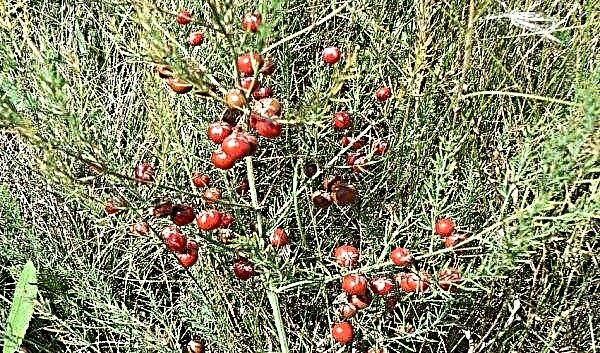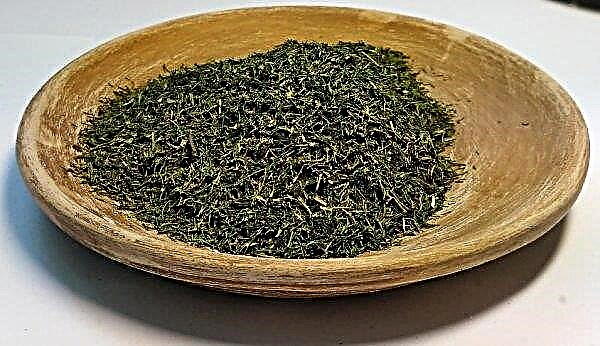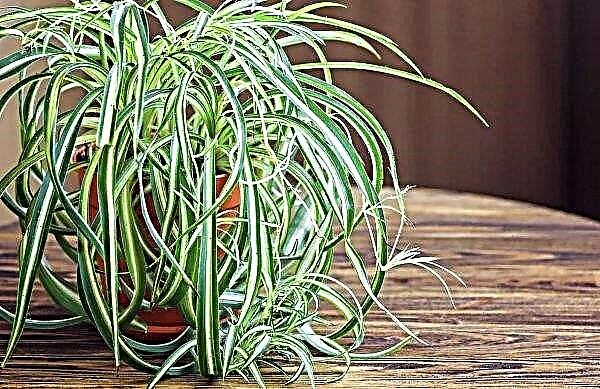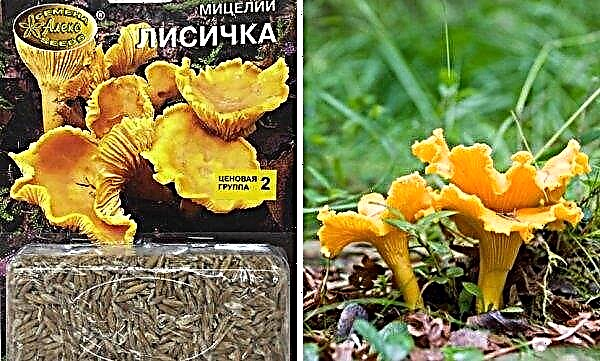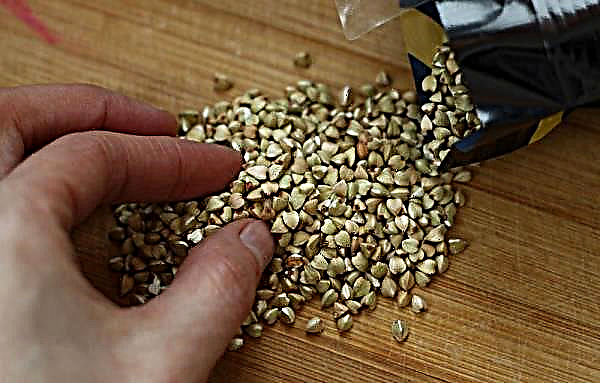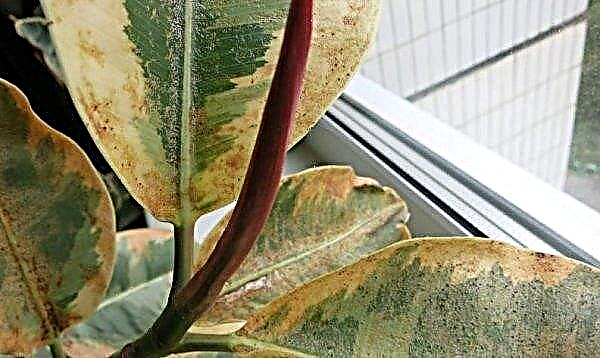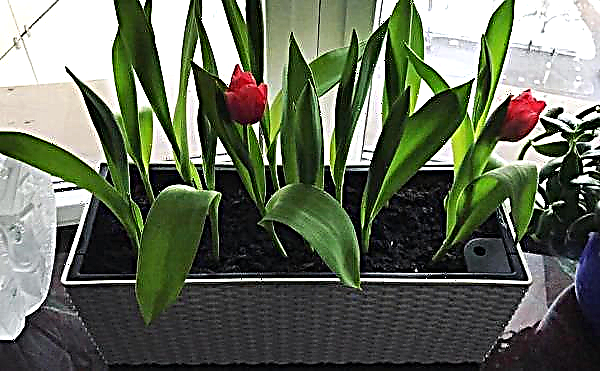Alocasia Polly belongs to the evergreens, has several dozen varieties, but all of them require the same care. This is a poisonous, but at the same time a healing look that will decorate any home with its look.
Botanical description of the plant
Alocasia Polly has only about 10 leaves and rarely blooms, but more often than other species of this plant. The flowers smell very nice, but many prefer to remove them, since the leaves do not grow during flowering. If you leave the inflorescence, over time, berries appear with seeds suitable for planting.

Plant characteristics:
| Root system | Compact, small tubers |
| Stem | Thick, vertical, height up to 70 cm, short rhizome |
| Leaf shape | Heart-shaped, width 20 cm, length up to 50 cm, pointed end, large teeth along the edges |
| Leaf color | Dark green, metallic coating and pronounced greenish or creamy streaks |
| Flower shape | Ear of flowers with small flowers (inflorescence), covered with a leaf on top |
| Color of flowers | Pale |
| Fruit shape | Rounded |
| Fruit color | Bright red |
| Fruit flavor | Inedible |
Important! Alocasia Polly - a poisonous plant. When caring for her, avoid getting juice on the mucous membranes of animals and people. Vapors from the roots are also poisonous.
Conditions for successful growing at home
Alocasia is unpretentious and able to adapt to various conditions. However, for her, too, there are recommendations on the content. If you stick to them correctly, the plant will always be beautiful and healthy.

Location
This plant is photophilous, but direct contact with the rays of the sun is harmful to it. Choose the western and eastern part of the housing to accommodate alocasia and make sure that it does not lack lighting. If you have children or animals, make sure that the flower is out of their reach.
Did you know? If the juice of alocasia gets on the skin or in the body, the consequences will be unpleasant: from severe irritation to numbness of the tongue and diarrhea. At the place of contact, pain and burning appear, and the process of swallowing and breathing is difficult due to pain.
Temperature
Comfortable temperature for alocasia depends on the season:
- in winter - at least 18 ° C;
- in summer - from 22 to 26 ° C.

A sharp change in the microclimate, as well as drafts, should not be allowed.
Air humidity
In the heat of Alocasia Polly, the ends of the leaves dry out. To prevent this from happening, the air around the plant must be often sprayed, and next to the pot should be a container of water. This is especially important in the winter, when heating appliances work in the house.
Home Care
Do not be fooled by the large size and affiliation of Poloc's alocasia to exotic tropical plants - it’s not difficult to look after it at home. It is only necessary to observe a few simple rules.
Video: Home care and maintenance for alocasia
Watering
Humidity is the main requirement. In the warm season, the flower should be watered 2 times a day, preferably at the same time. Large pebbles are placed in the stand, dousing it with water. It is important to ensure that the liquid does not stand in the pan.

But in the cold season, the plant is watered 2 times a week, not more. In those days when there is no watering, the soil should be loosened to provide oxygen to the roots.
Suitable water temperature for irrigation is around 25 ° C. It is advisable that she be defended in advance. Do not forget about the mandatory spraying of leaves, which is easiest to do with a spray bottle.
Top dressing
With the right choice of fertilizers, alocasia can be fed year-round. However, overfeeding is fraught with the death of the plant. Therefore, it is worth choosing fertilizers correctly:
- Spring and summer: mineral supplements with potassium and nitrogen once a month, and preferably every 3 weeks.
- Fall and winter: feeding with phosphorus 1 time in 1.5 months. It helps the root system develop, stimulates growth and strengthens the entire plant.

Fertilizers are best bought in specialized stores.
Pruning
Actually, it is not necessary to cut off alocasia. The only thing you can get rid of is dried, spoiled leaves.

There are 2 ways to trim this:
- Cut off the damaged sheet with secateurs to a healthy tissue and grease the wound with wood ash.
- Cut off all the leaves to renew the plant, leaving a bare trunk - this will help awaken the sleeping buds. But the procedure itself is risky and does not give any guarantees.
Transfer
A young plant is transplanted every spring, and an adult every 3 years. The roots of alocasia are fragile, it is impossible to damage them, therefore they do not beat the earth from them and do transshipment without disturbing the earthen lump.
Important! When choosing soil, it should be remembered that it must be breathable, airy.
You can mix garden soil with peat and a ready-made mixture for orchids. Also suitable is a store bud for deciduous plants, coniferous land. Peat is required. Tamp the mixture into the pot to medium density. The pot itself should be taken large and stable.

When transplanting, it is necessary to work only with gloves, bearing in mind that all parts of alocasia are poisonous.
Breeding
Alocasia Polly propagated by vegetative methods, that is, cuttings, division of tubers or rhizomes. Whatever method is chosen, the result will be the same, so everyone chooses what is more convenient or interesting to him.
Video: Reproduction of Alocasia Polly
Cuttings
From alocasia at an angle of 45 ° you need to cut off a stalk 10-14 cm long, soak in any growth stimulator (you can buy in a store), and after that - plant peat and sand in a mixture. In this substrate, greenhouse conditions should be created by covering the stalk with a jar or a piece of plastic. Well, if the bottom design is slightly warmed up.
After planting in the ground, the temperature should be maintained at least 23 ° C for 1 week. It is better to keep the plant in partial shade.
Division of rhizomes or tubers
This method is used in the spring, during the Polly alocasia transplant. It is necessary to act with extreme caution, not forgetting the gloves:
- choose a good tuber and divide it into parts;
- plant chopped pieces in sand or peat ground;
- cover the pot with film and put in a bright room (temperature - not lower than 23 ° C);
- remove the film periodically to water and ventilate;
- remove the film after the first sprouts appear.
They look after young alocasias in a general manner.

Growing difficulties
Even an unpretentious plant like Alocasia Polly is vulnerable to disease and suffers from pests if it was not properly maintained. Dry air is especially dangerous for a flower.
Did you know? Polly alocasia is used in folk medicine to treat tuberculosis, diseases of the musculoskeletal system, dermatitis, varicose veins, fibroids and fibroids, and malignant tumors.
Disease
Having noticed any deviations in the appearance of the flower, find the reason for their appearance and adjust your further actions. Signs and causes of diseases:
- Leaves have a faded color. - Alocasia receives too little sunlight. Move it to a more lighted place.
- Leaves are dry or stained - there is too much sunlight. Remove the plant in a shaded area and make sure that direct rays will not fall on it.
- Leaves withered and fall - This symptom indicates rotting of the root system. This happens if you water the flower too much. Excess moisture must be removed, the soil must dry.
- Slow growth - lack of nitrogen. Buy a special supplement or prepare it yourself (1 g of urea per 1000 ml of water 1 time per month).
- Flowering leaves - depletion of the plant. It is recommended to prune the flowers, and add fertilizing to the watering.

Pests
Alocasia Polly may be attacked by:
- Whitefly - the presence of a shiny pad on the plant. The treatment of leaves with a solution of air conditioning (0.1 ml per 1000 ml of water) will be effective.
- Spider mite - on the leaves are white dots with cobwebs. The treatment of leaves with an actellic (1 g per 1 liter of water) helps the parasite.
- Aphid - it is removed by phytoderm (1 liter of water and 2 mg of the drug) or folk remedy (1/2 cup of vegetable oil, 1 cup of water and 1 tsp of laundry soap).
- Shield - a scaly insect that attaches to a plant. In appearance, these are small brown tubercles that are washed off with a brush with a soap solution (15 g of soap in 1 liter of water). It is also useful to cultivate the earth and leaves with actara (1 g per 1 liter of water).




Inspect the plant regularly for pests, they cause significant harm.
Alocasia Polly is a beautiful flower that will become an adornment of any home if favorable conditions are created for it and proper care is provided. Water and adjust the lighting, transplant the plant on time and monitor the quality of the soil.



